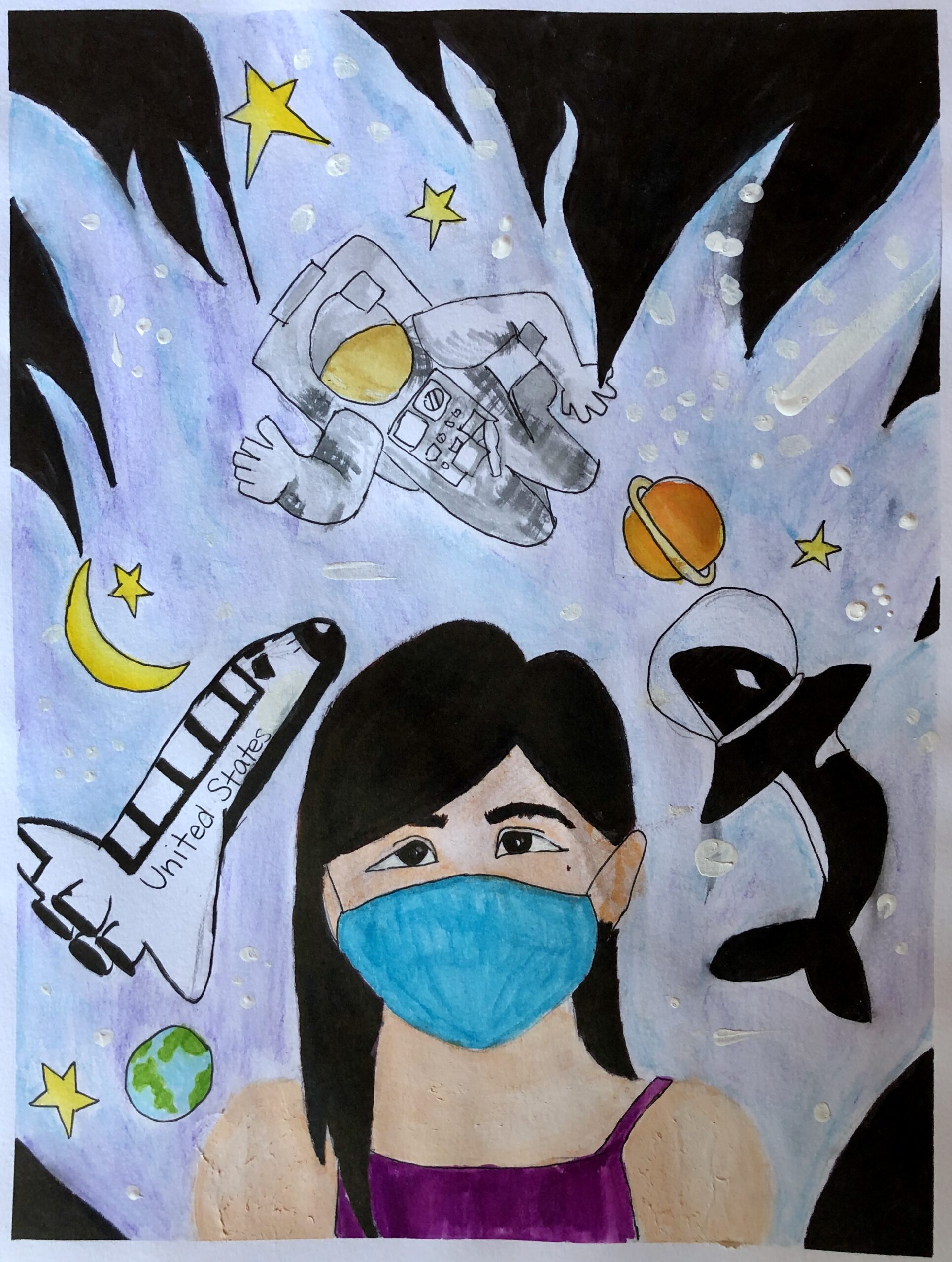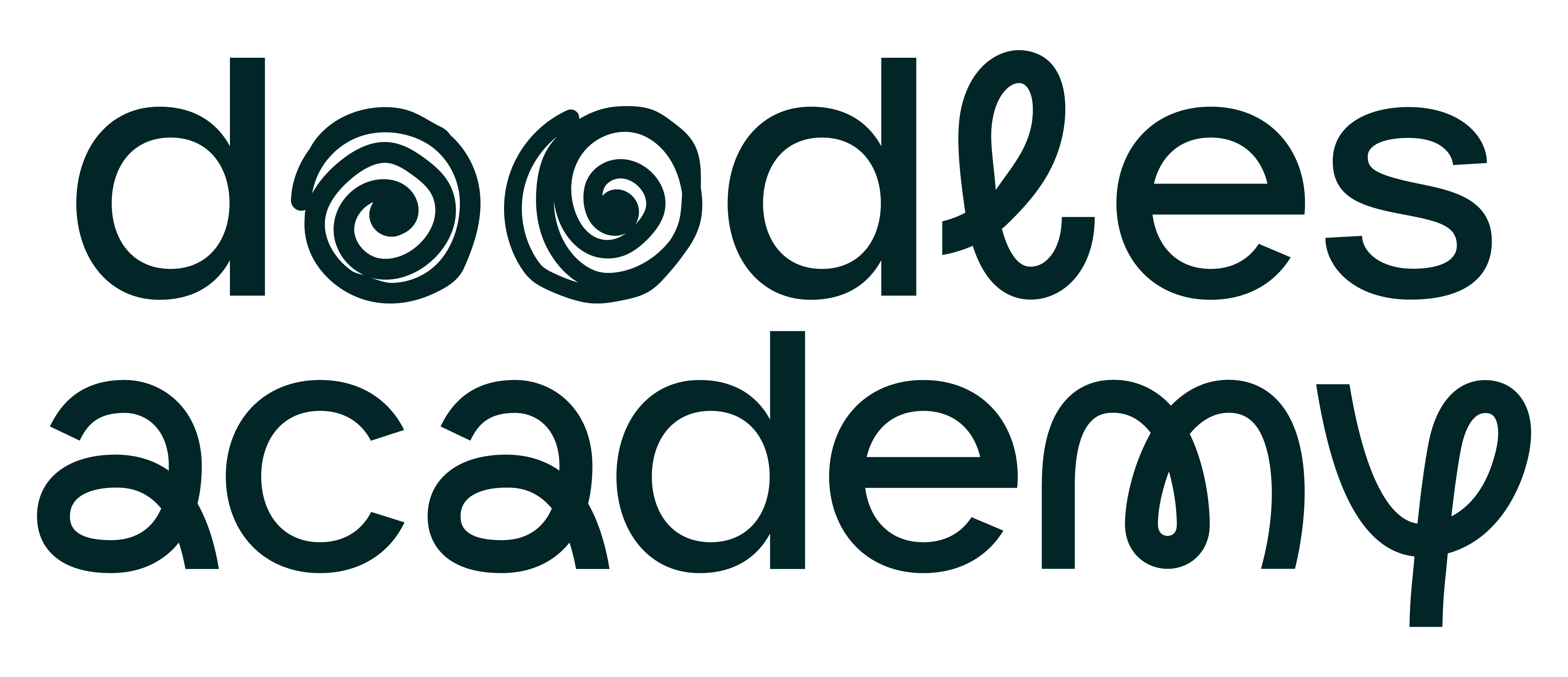Connecting Art Lessons With Student’s Experiences and Stories
Most of the artists I know work from their own experiences. How can teachers connect their art lessons to the experiences and stories their students bring with them into their classrooms?
By Mark LaRiviere, Children’s Arts Guild
Some of the greatest gifts teachers can give to their students are to create lessons that let students explore their experiences and the personal stories that they carry with them in life. When children know that their experiences and stories are valued by the adults in their world, and that they can create with them, they will carry that belief within themselves throughout their lives.

A self-portrait done by an 8th grade student.
Years ago when I was teaching art in the Bronx, a second grade student named Allison asked me during class, “Why do we always make art about what you want to make, could we make art about what we want to make?” It was a precocious question from such a young child, but it got me thinking. “How could I redesign my curriculum to still teach the concepts, skills and materials that the students need to learn and also let them express from their own personal experiences?”
My solution was to develop a series of open-ended questions that I would pose to the students for each art lesson. Questions such as, “What do you like to do alone?” “What do you like to do with your family or friends?” “What is something you are good at?” “What makes you laugh?”, etc? With help from my students, we developed a year’s worth of questions for the curriculum. At the beginning of each lesson a new question would be posed as the starting point of our work. I was able to teach the concepts, skills and materials I needed to teach yet give the students the power to create artwork that was personal and meaningful to them. By giving the children open ended questions that they can answer personally, these questions become the subject of their work. The art that the students produce is much more varied and lively. For example, in teaching students to draw a human figure, a figure in motion or a face or head, letting them choose a person they have a friendship with or a family member lets them add details that helped them develop and create work that was personal and meaningful to them. We still teach with the materials and visual concepts we introduce to our students, yet by giving them ownership of the subject matter, we can assist them in developing their expressive skills that they are choosing.
As art teachers, we are asked to teach our students many skills that will give them the abilities to further their expressions in the visual arts. We teach these important skills throughout the developmental stages in our students’ lives, from mixing primary colors in their early years to complex composition and material explorations as they get older. While these skills are very important and need to be taught, the underlying reasons students learn the visual arts is to give them a means of expressing themselves and understanding how all cultures have communicated through visual elements.
As we introduce and teach these skills to our students, I have found that the most successful art teachers design lessons where their students begin with the idea that they will be telling their own stories. The art they will make, and all of the learning that will be happening in the class, is in service of each student finding the best tools, techniques, concepts and skills to get their personal ideas across in the visual medium we are learning.

A self-portrait done by a 6th grade student with objects found around the house.

A self-portrait done by an 8th grade depicting their anxiety.
One of the gifts many teachers learned during the pandemic when students were learning from home, was that they began to create art that was very personal to them out of necessity. While some of the students had access to art materials, others needed to make do with rudimentary art tools; for some students, ballpoint pens on lined paper were all that was available to them. Much of the artwork that the students showed their teachers was personal and very expressive. The students were telling stories about their lives with whatever materials they could find.
Many of the teachers had to scrap their plans and began to ask the students to create art that allowed them to express what was happening in their world as we were all shut down and working from home.
Now that schools are back in session, we can continue to learn from what our students showed us during lockdown. They can create personal and expressive artworks very creatively and we can continue to teach them the skills and further their understanding of the visual tools we offer through our classes.

Mark LaRiviere
Mark LaRiviere is an artist and educator teaching children and adults to discover their personal creativity through the visual arts, music, and a host of activities that bring us closer to expressing our true natures. Mark is a co-founder of the Children’s Arts Guild, he founded Creative Classrooms, works with Studio in a School Association and has taught education students at Manhattan College in NYC.
Mark believes that all children should know that they are valuable human beings and that their experiences and interests are valuable and are the basis of engaging them in their education.
Mark is also a working sculptor showing at galleries and museums across the country.
